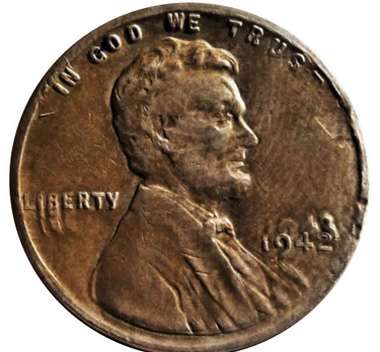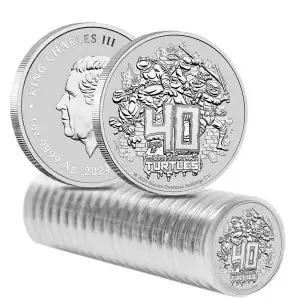
Think Again.
There are many signs illustrating why this coin – once offered for sale on EBay – is yet another altered coin meant to fool collectors.

Weigh the Coin: A Genuine 1943 Copper Lincoln Cent Should Weigh About 3.11 Grams
In contrast, genuine 1943 steel cents weigh about 2.7 grams. Clearly, this coin is not a 1943 copper cent, nor are 99.9% of the uncertified ones you will see in person or online on E-Bay or Etsy.
Evidence of the Steel Planchet Showing
The red arrows illustrate areas where the base planchet from a 1943 steel cent is showing.

The raised rims are a great place to check if a coin has been plated. Often after they’re plated and/or when they’re left to sit and dry/harden, the rims make contact with the surface they’re resting on. This can cause the plating to not set properly and be lacking. Also, because the rims are the highest point on a coin, handling of them can cause the plating to come off due to friction (as well as other high points on a coin).

Compare Them and the Shapes of Numbers and Letters to Coins You Know Are Genuine
Sites like PCGS® and NGC® will have HD photos of genuine coins you can use as a reference.

(A) The shape of the top of the “2” and inner loop of both the “2” and the “9” do not match genuine 1942 cents.

(B) The width of the numbers is much wider than normal and is not flattening from circulation wear.
Strikes From Fake Dies Seldom Have Sharp Designs Where Details Should Be Prominent and Can Reflect Uneven Wear

Because forgers seldom take the time or have the technology to get the fine details correct (like Lincoln’s hair and beard on cents), these are great areas to check. Also, because many coins with additional strikes from fake dies aren’t done using minting equipment, the striking pressure and resulting designs can be uneven resulting in some areas looking worn while other designs appear sharp.
Notice with the suspect coin on the left, for some reason “GOD WE” from IN GOD WE TRUST and the “RTY” of LIBERTY are very sharp, yet the 1942 date appears worn/flattened. Coins should show wear evenly throughout as you see on the 1942-D on the right, not spotty as you see on the suspect coin – a clear sign of uneven striking pressure from one side to the other. His hair and beard should also have much more definition than they show.
Fake Die Strikes Over Previously-struck Coins Often Have Rim Damage

If the suspect coin was really struck a second time inside the collar, it should not have rim damage, including flattening. Notice the flattening of the rim on the suspect coin, yet the genuine double-struck flip over in-collar 1942 cent on the right does not have rim flattening anywhere on the coin.
Lastly… Do you mind explaining how a die from the previous year (1942) struck a 1943 cent?
Now in 1965 and early 1966, the Mint was still producing some 1964-dated silver coins, so I suppose it’s possible an error like this could occur. However there is a difference between “possible” and “likely,” and the likelihood that Mint workers kept 1942-dated dies around and placed them in a chamber set to strike 1943-dated coins – and struck a 1943 copper cent – is too slim to accept.

This article is contributed by
Joseph P. Cronin
Author of "Mint Errors to Die For"






